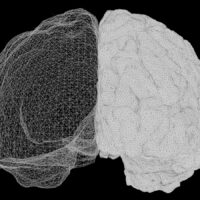Strength training is more than the act of building muscle; it’s a basic component of overall health. It aids in mobility and posture, mental strength, and reduces the risk of injury. Whether an athlete striving to reach the pinnacle of performance or health, one cannot undermine the importance of muscle strength. This in-depth guide gives valuable insights into the science behind the growth of muscles, with tips and efficient exercises that also cover vital nutrition required for building strength.
Muscle Building: Understanding How It Works
At the core of building muscles is a biological process often described as hypertrophy. You are, in essence, putting stress on your muscles during resistance training, thereby causing tears within the muscle fibers. Your body then initiates the repair of such muscles, making them even stronger than initially. It is an adaptive mechanism, indicating that over time, one develops considerable strength and muscle mass once he continuously undertakes resistance training. Genetics, age, and nutrition are all other variables that will affect how much and how quickly one will develop muscle mass.
Basic Principles for Building Muscle
There are a few basic principles to follow for maximum progress in the development of muscles:
- Progressive Overload: This is the very key to muscle development. Gradually increasing the resistance, repetitions, or sets against your muscles forces them to continue to develop. Doing the same thing over and over, without ever changing it, will cause you to reach a plateau.
- Proper Form: Safety first. Lousy form not only inhibits progress, but it also invites injuries. Paying attention to correct form and technique means one can effectively involve the right groups of muscles and reduce strain on one’s joints.
- Rest and Recovery: Remember that your muscles grow when you’re at rest, not when you’re working out. Incorporating rest days into your schedule and sleeping appropriately-including 7-9 hours each night-are ways your body can recover and rebuild. Active recovery can also be lighter forms of stretching or low-intensity cardio that help improve muscle repair.
- Nutrition: No amount of hard training will prepare one for the improved growth and development of muscles if nutrition is poor. Ingestion of adequate proteins, carbohydrates, and unsaturated fats builds the essential requirement for muscle repair and replenishing energy reserves.
Effective Strength Training Exercises
A comprehensive strength training exercise will cover both major and minor muscle groups.
Here are the basic categories:
1. Compound Exercises: These are multiple-joint and large muscle group exercises; thus, highly effective in building strength.
Squats: Works your quads, hamstrings, glutes, and lower back. Variations include front squats and sumo squats that place greater emphasis on different muscle fibers.
Deadlifts: Works most of the posterior chain from hamstrings to upper back.
Bench Presses: The base exercise for chest, shoulders, and triceps.
Overhead Presses: Shoulders and triceps are engaged, along with core stability.
Rows: Strengthens the upper back, biceps, and forearms.
2. Isolation Exercises: These are exercises that stress a single muscle group, hence allowing concentrated development.
- Bicep Curls: This effectively isolates the biceps to hypertrophy them.
- Tricep Extensions: This targets the triceps to give the arms better definition.
- Leg Extensions and Leg Curls: These exercises develop strength in the quadriceps and hamstrings, respectively.
- Calf Raises: Engage the calf muscles for better lower-leg strength.
3. Bodyweight Exercises: Versatile in building strength with no equipment.
- Push-ups: The push-ups engage the chest, shoulders, and triceps.
- Pull-ups: Works the back, biceps, and forearms.
- Lunges: Strengthens legs in balance and coordination.
- Planks: This is a core strengthening exercise that helps improve stability.
Creating a Strength Training Program
A well-structured program should be a balance of frequency, intensity, and volume:
- Frequency: For beginners, 2-3 strength training sessions a week offer a good foundation. For more advanced lifters, 4-5 times per week is quite adequate; this may also involve splitting different muscle groups on different days.
- Intensity: Use a weight challenging to you yet still in a position where you can maintain proper form. Typically, you want 6-12 reps per set for hypertrophy using a weight where the last few are hard but manageable.
- Volume: Perform 3-5 sets per exercise based on your goals. The smaller lifters will get away with fewer sets, but the bigger and more experienced ones can add more to give themselves greater stimulus.
- Variation: Never get too comfortable; vary your exercises from time to time, and even rep schemes and levels of intensities. These keep the muscles on a guess and help you avoid strength or size plateaus.
Nutrition for Muscle Growth
Your nutrition is one of the main determinants of your training.
1. Protein: This is generally viewed as the building block of muscle and is essential for muscle repair and new muscle growth. The recommended amount is 0.8-1.2 grams per kilogram of body weight per day. Good sources include lean meats, eggs, fish, and plant-based sources such as beans and lentils.
2. Carbohydrate: This provide the required energy needed for your workouts and help in muscle recovery by replenishing the energy stores in muscles. For this purpose, it’s best to consume complex carbohydrates like oats, brown rice, and sweet potatoes because they are digested slowly, hence providing energy for a longer period of time.
3. Good Fats: Essential Fats-These are helpful in the production of all sorts of hormones required by the body, including testosterone, which is very important for muscle gain. Adding avocados, olive oil, and oily fish to one’s diet helps.
4.Hydration: Water is often overlooked, but it’s important when considering muscle use and replenishment. Good hydration increases performance, prevents muscle cramps, and also aids in the proper assimilation of nutrients.
Supplements to Gain Muscles
While foodstuffs must not be replaced with supplements, the latter do come in handy to bridge the nutritional gap:
1. Protein Powder: An easy way to increase protein intake, especially post-workout, which is the time when muscles can most aptly use protein synthesis for their development.
2. Creatine: Probably one of the most researched supplements, creatine helps improve muscle strength and power by increasing the amount of energy your body can produce during high-intensity training.
3. Branched-Chain Amino Acids (BCAAs): These can come in handy in reducing general muscle soreness and even promoting faster recovery, especially for people in high-volume training.
Common Mistakes to Avoid
In order to reap the best results from your workout, evade these common mistakes:
1. Overtraining: Without giving the body time to recover, overtraining may cause fatigue, injury, and waning results.
2. Bad Form: Good form easily outweighs the pounds one lifts. Poor form may lead to personal injuries that might put one out for weeks or even months.
3. Inadequate Rest: Muscles need rest to recreate or grow after every workout; little rest hampers growth and may result in burning out easily.
4. Inconsistency: Consistency in training as well as nutrition is the most important factor that will produce long-term results. Missing workouts and not taking care of your diet will slow down your progress completely.
Conclusion
Strength building is a process that involves patience and a little planning; it takes time. You are able to achieve only constant and progressive gains if your focus is upon selecting the right exercises, getting proper nutrition, and resting for recovery. Remember, progress takes time, so just stick to your routine, celebrate small victories, and enjoy this transformative power of strength training. Be it a beginner in fitness or an advanced athlete, strength training will alter not just your body but also help you in living a better quality of life.
Engage with Us:
Stay tuned for more captivating insights and News. Visit our Blogs , Science paper , Study Portal and Follow Us on social media to never miss an update. Together, let’s unravel the mysteries of the natural world.


















